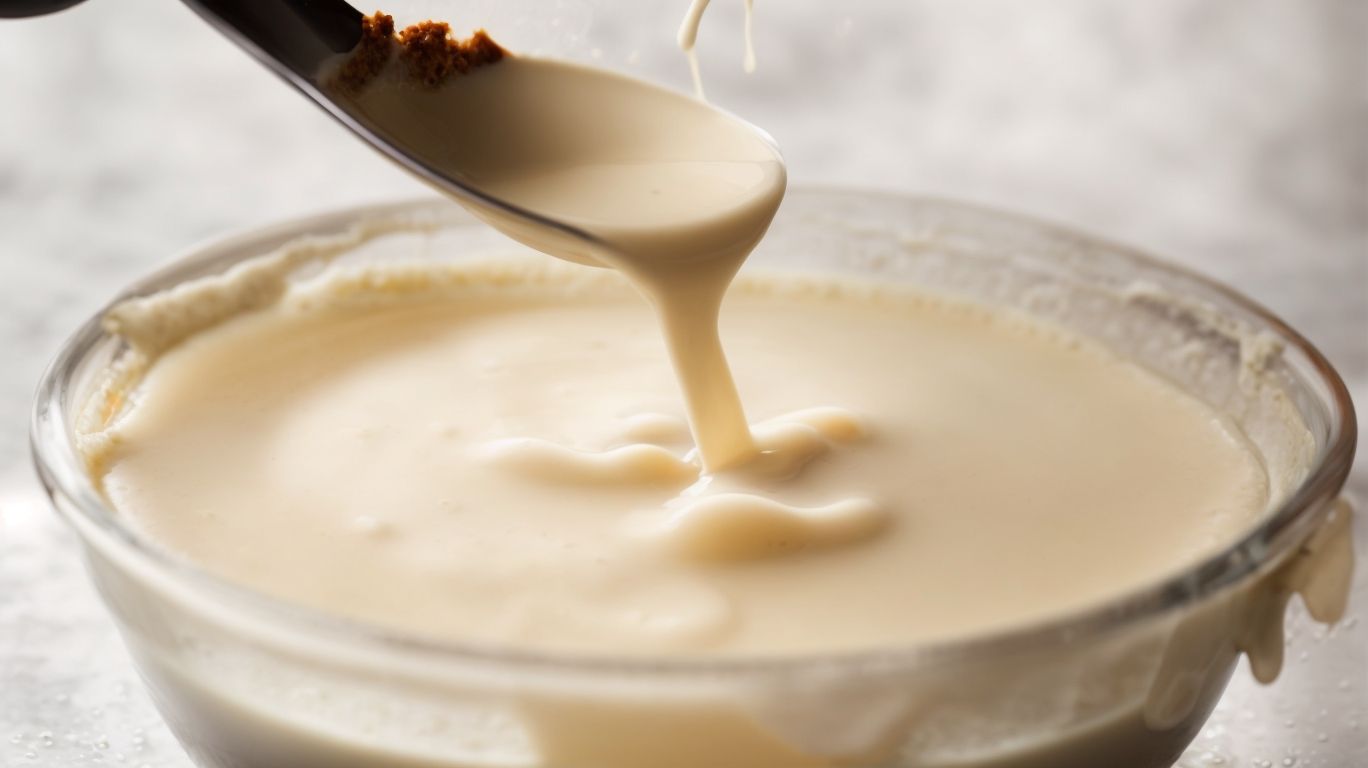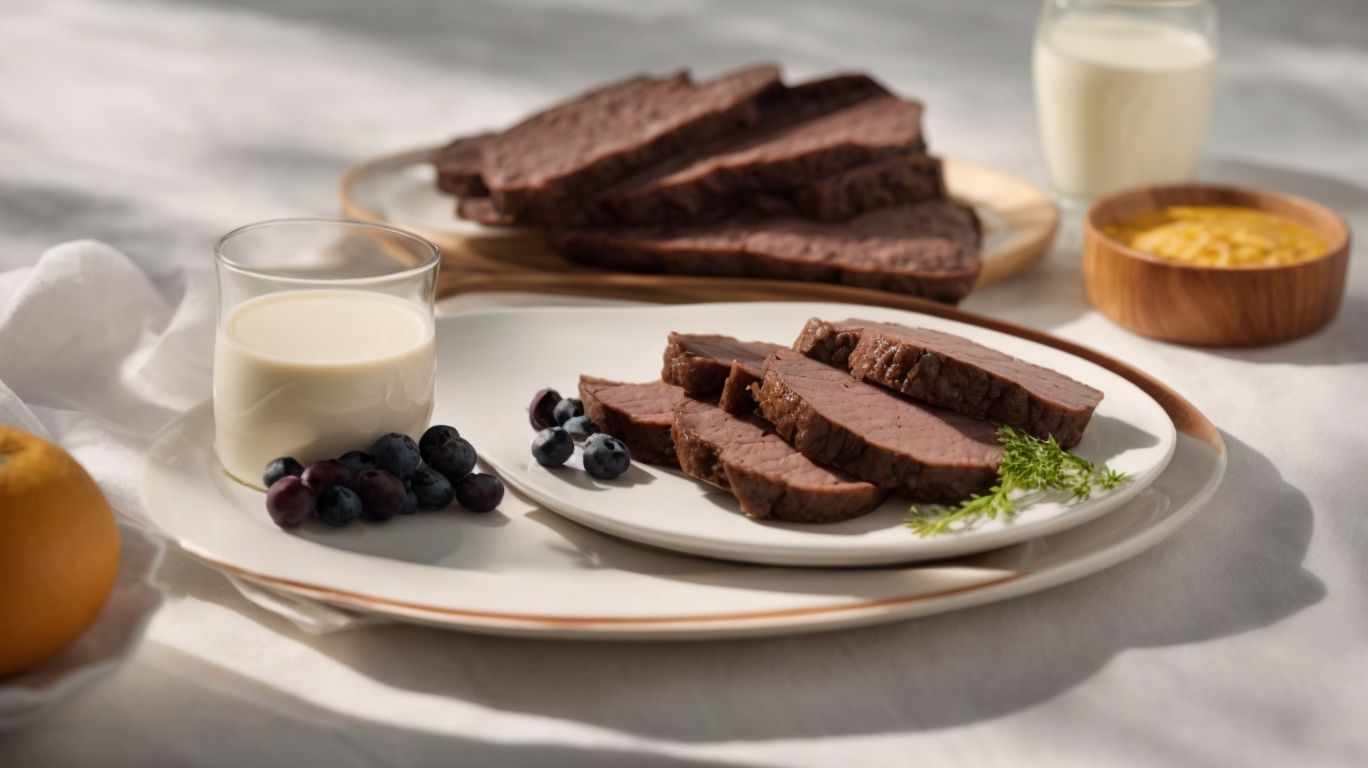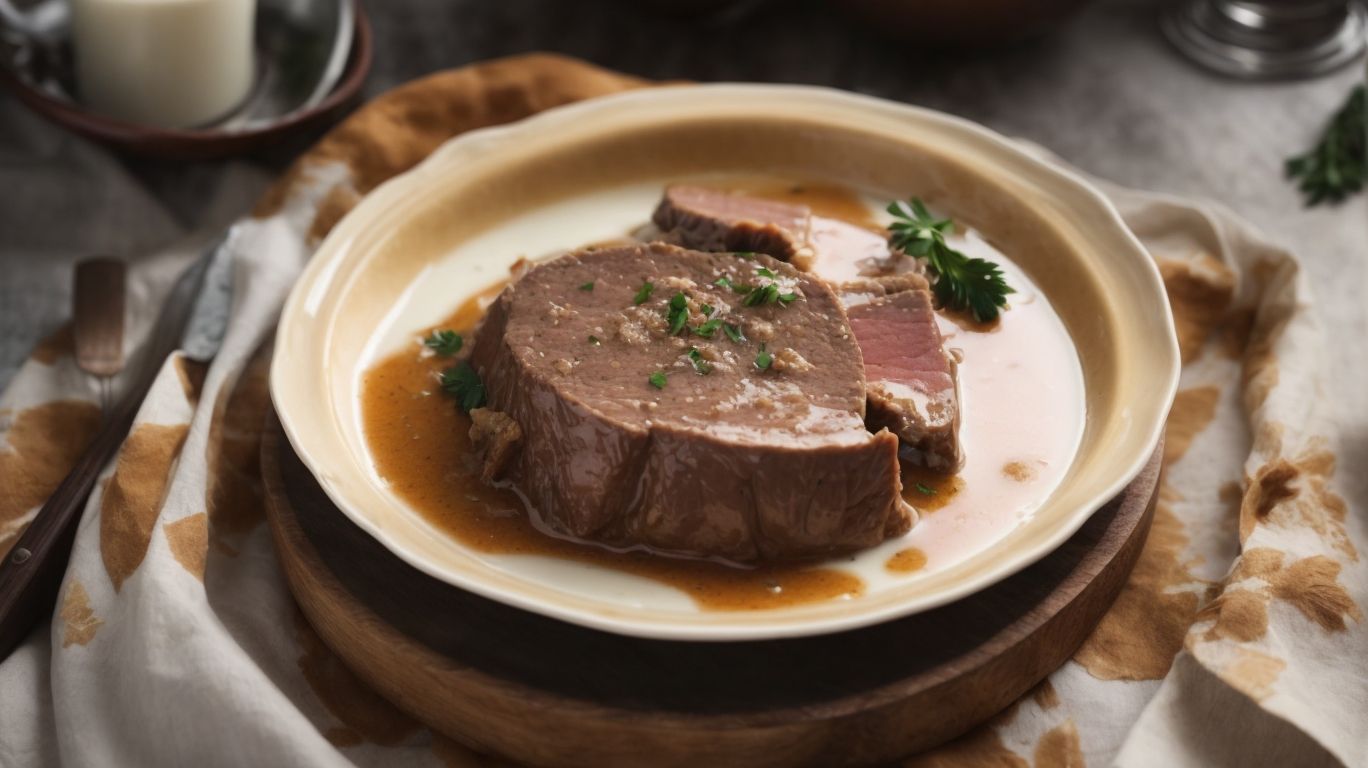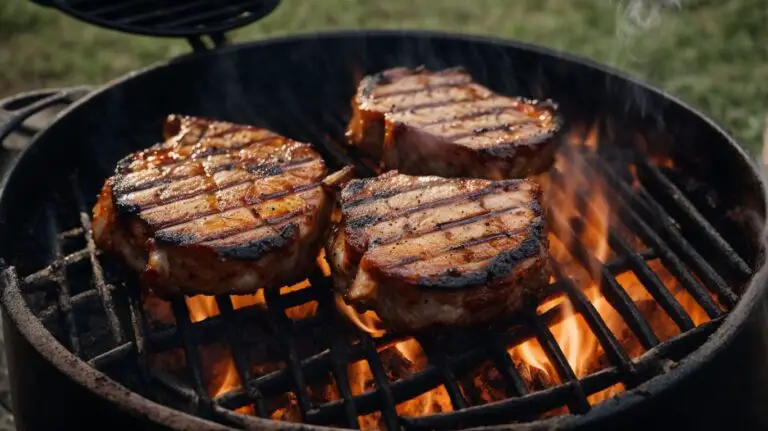How to Cook Liver After Soaking in Milk?
Looking to elevate your liver dishes to a whole new level? Soaking liver in milk may just be the secret ingredient you’ve been missing!
This article will explore why soaking liver in milk is a game-changer, what type of liver to use, how long to soak it for, and the benefits of this technique.
We will also delve into how to prepare, soak, and cook liver after soaking in milk, as well as some tips and tricks for the perfect dish. Keep reading to take your liver recipes to the next level!
Key Takeaways:
Why Soak Liver in Milk?
Soaking liver in milk is a common practice in culinary preparation, especially for those who are not fond of the strong flavor of liver.
When liver is soaked in milk, the lactic acid in the milk helps to break down the enzymes in the liver, making it more tender and lessening its pungent taste. This process also helps to remove any excess blood from the liver, resulting in a milder flavor that is more palatable to those who may not enjoy the typical intense taste of liver. Soaking liver in milk can also help to reduce any potential bitterness that may be present in the meat, providing a smoother and more enjoyable eating experience.
What Type of Liver Should You Use?
When considering what type of liver to use for recipes like liver and onions, fresh beef liver is often the preferred choice for its flavor and texture.
One of the key reasons why fresh beef liver stands out in liver dishes is its tenderness. This type of liver has a delicate yet robust flavor that can greatly enhance the overall taste of the dish. Its rich iron content also adds a depth of flavor and nutritional value to the meal. When cooked properly, fresh beef liver maintains a juicy and succulent texture that pairs well with savory seasonings and caramelized onions in classic recipes like liver and onions.
Choosing high-quality fresh beef liver can truly elevate your cooking!
How Long Should You Soak Liver in Milk?
The optimal duration for soaking liver in milk can vary but generally ranges from 30 minutes to a few hours, depending on the recipe and desired outcome.
Soaking liver in milk serves a dual purpose in culinary preparation. Milk helps to mellow the strong flavors and reduce any potential bitterness of the liver. This soaking process also aids in tenderizing the liver, making it more palatable and less chewy once cooked.
- Factors such as the type of liver (beef, chicken, or pork), thickness of slices, and personal preference in terms of taste and texture can influence the soaking times. For example, thicker slices may require longer soaking periods to achieve desired tenderness.
It’s important to monitor the soaking process and perform occasional taste tests to determine the ideal duration based on your preferences.
What Are the Benefits of Soaking Liver in Milk?
Soaking liver in milk offers several benefits, such as tenderizing the meat, reducing its strong flavor, and making it more palatable for individuals who are not fans of liver dishes.
One of the key advantages of using a milk soak for liver is that it helps in improving the overall texture of the meat. The enzymes present in the milk work to break down the tough fibers in the liver, resulting in a more tender and juicy final dish.
Soaking liver in milk not only helps to reduce the sometimes overpowering taste of liver but also imparts a subtle sweetness to the meat. This makes it a great technique for those looking to introduce liver into their diet without being overwhelmed by its characteristic flavor.
The milk soak can significantly enhance the cooking experience by creating a more versatile ingredient. Whether you’re sautéing, grilling, or frying the liver, the pre-soaked meat cooks more evenly and is less likely to become tough or dry.
How to Prepare Liver for Soaking?

Credits: Poormet.Com – Eugene Taylor
Before soaking liver in milk, it is advisable to rinse the liver slices under cold water and trim any excess connective tissue or undesirable parts for a cleaner and more appetizing result.
After rinsing and trimming, ensure that the liver is in optimal condition by checking for any discolored areas or blood vessels that need to be removed. It is important to maintain the liver’s integrity and shape during this process to retain its texture and flavor.
Additionally, make sure that the liver is properly thawed if using frozen slices, as this will allow for even soaking and flavor absorption.
Should You Rinse the Liver Before Soaking?
Rinsing the liver before soaking is recommended to remove any impurities, excess blood, or lingering flavors that may affect the final taste of the dish.
When preparing liver, particularly from certain animals, a preliminary rinse under cold water is a critical initial step. This process not only cleanses the organ meat but also helps in reducing the earthy or mineral-like taste that can sometimes be present. By rinsing off any unwanted residue, you pave the way for a more pure and appetizing flavor profile in your dish.
Ensuring the liver is properly cleaned at this stage will ultimately lead to a more enjoyable culinary experience.
Should You Trim the Liver Before Soaking?
Trimming the liver before soaking is crucial to eliminate any tough, sinewy parts and ensure that the liver slices are uniform in texture for even cooking.
When you trim the liver slices before soaking, you are not only removing any undesirable parts that may compromise the overall taste and texture of the dish but also ensuring that each bite delivers a consistent mouthfeel. This step is particularly important in achieving a harmonious blend of flavors and tenderness throughout the dish.
By trimming the liver uniformly, you create an equal cooking surface, allowing the heat to distribute evenly, resulting in perfectly cooked slices. This attention to detail guarantees that every piece reaches the desired level of doneness simultaneously, avoiding the frustration of some pieces being overcooked while others remain undercooked.
How to Soak Liver in Milk?
To soak liver in milk effectively, place the liver slices in a shallow dish, pour enough milk to cover them completely, and let them marinate in the refrigerator for the recommended duration.
By allowing the liver to sit in milk, you not only tenderize the meat, but also reduce any potential bitterness. This process is particularly beneficial for stronger-flavored liver types like beef or venison. Marinating the liver in milk for at least 1-2 hours or even overnight can yield optimal results by enhancing the overall flavor profile.
Remember that the milk should fully submerge the liver slices. If necessary, adjust the quantity of milk to ensure that the liver is completely immersed. The lactic acid in the milk helps neutralize any strong flavors and can make the liver milder and more palatable.
What Type of Milk Should You Use?
When choosing milk for soaking liver, opt for whole milk or buttermilk for their richness and ability to tenderize the meat effectively.
Whole milk, with its higher fat content, helps to create a moist and flavorful result when soaking liver. It adds a creamy richness and depth of flavor to the meat, making it succulent and tender after cooking.
On the other hand, buttermilk, with its tangy taste and acidic quality, not only enhances the flavor profile of the liver but also works as a natural tenderizer, breaking down the tough fibers and ensuring a softer texture. Both types of milk play a crucial role in achieving the desired taste and texture when preparing liver dishes.
What Other Ingredients Can You Add to the Soaking Mixture?
Enhance the flavor profile of the soaking mixture by incorporating ingredients like thinly sliced onions, a splash of fresh lemon juice, or aromatic herbs to complement the liver and elevate the dish.
This additional layer of complexity will infuse the liver with subtle undertones, ensuring a rich and multi-dimensional taste experience. The onions add a hint of sweetness and depth, counterbalancing the inherent earthiness of the liver. Meanwhile, the lemon juice provides a burst of freshness, cutting through any potential heaviness and brightening the overall flavor profile. The herbs, whether it’s a sprinkle of parsley, a dash of thyme, or a pinch of rosemary, introduce nuanced herbal notes that harmonize with the other ingredients and bring a sophisticated touch to the dish.
How to Cook Liver After Soaking in Milk?

Credits: Poormet.Com – Adam Robinson
After soaking liver in milk, there are various cooking methods to consider, such as pan-frying, grilling, or incorporating it into traditional liver and onions recipes.
For a classic liver and onions dish, sauté thinly sliced onions until caramelized, then add the milk-soaked liver slices, cooking until browned on both sides. Season with salt, pepper, and a touch of fresh herbs for added flavor.
If you prefer a lighter option, try grilling the milk-soaked liver. Marinate the liver slices in olive oil, garlic, and lemon juice before grilling for a few minutes on each side until cooked through.
What Cooking Methods Are Best for Liver?
Regarding cooking liver, popular methods include pan-frying thinly sliced beef liver and incorporating it into classic dishes like beef liver and onions for a hearty and flavorful meal.
One key step to achieving a delicious pan-fried beef liver is to properly season the slices with a mix of salt, pepper, and your favorite herbs or spices – this helps enhance the natural flavors of the liver.
For the iconic beef liver and onions dish, caramelizing the onions to a rich golden-brown complements the savory taste of the liver perfectly, creating a harmony of flavors and textures on the plate.
While pan-frying allows you to control the cooking process and achieve the desired level of doneness, some may also opt for braising or grilling liver for different taste profiles and textures.
What Are Some Recipes for Cooking Liver After Soaking in Milk?
Experiment with liver and onions recipes that incorporate fresh herbs and aromatic spices to appeal to both liver enthusiasts and those skeptical of this dish, creating a flavorful and satisfying meal.
By soaking the liver beforehand, you can tenderize it and reduce any potential bitterness, making it more palatable for a wider audience. Pairing the liver with onions caramelized to perfection adds a touch of sweetness that perfectly balances the rich flavors. Consider infusing your dish with rosemary for a fragrant twist or maybe opt for the classic combination of garlic and thyme for a robust profile.
Adding a splash of balsamic vinegar towards the end of cooking can elevate the flavors and give your dish a slightly tangy edge. Feel free to experiment with different seasonings such as paprika, cumin, or smoked paprika to bring a unique touch to your liver and onions creation.
What Are Some Tips for Cooking Liver After Soaking in Milk?
To ensure a delicious outcome, avoid overcooking liver, cook it properly to retain juiciness, and follow the recommended cooking times established for cooked liver that is tender and slightly pink inside.
Start by soaking the liver in milk or buttermilk for at least 30 minutes, which helps to remove any bitterness and tenderizes the meat. Once soaked, pat the liver dry with paper towels to ensure a nice sear when cooking.
When cooking, make sure to preheat your skillet properly before adding the liver to prevent sticking. Sear each side for about 2-3 minutes over medium-high heat until nicely browned but still slightly pink inside. Remember, liver can become tough and lose flavor if overcooked, so keep a close eye on it while cooking.
How to Store Leftover Liver?
For leftover cooked liver, store it in an airtight container in the refrigerator for up to 3 days or freeze it for longer shelf life, ensuring proper reheating before consumption.
If you opt for refrigerating the leftover cooked liver, make sure to let it cool down to room temperature before transferring it to the airtight container to prevent condensation. Label the container with the date to track its freshness. If freezing, wrap the liver tightly in plastic wrap or aluminum foil before placing it in a freezer-safe bag to avoid freezer burn.
When ready to enjoy your preserved liver, ensure safe reheating. For refrigerated liver, gently reheat it in a skillet with a bit of oil or butter until warmed through. For frozen liver, defrost it in the refrigerator overnight before reheating to avoid inconsistent cooking.
Frequently Asked Questions
How do I prepare liver after soaking it in milk?
To prepare liver after soaking it in milk, first drain the milk and pat the liver dry with paper towels. Then, season the liver with your desired spices and herbs before cooking.
Why do I need to soak liver in milk before cooking?
Soaking liver in milk helps to reduce its strong, gamey flavor and tenderizes the meat. This method is especially helpful for those who are not fond of the strong taste of liver.
Can I substitute milk with another liquid for soaking liver?
Yes, you can substitute milk with lemon juice or vinegar for soaking liver. These acidic liquids also help in tenderizing the meat and reducing its strong flavor.
How long should I soak liver in milk?
The recommended time for soaking liver in milk is 30 minutes to 1 hour. However, you can soak it for longer if you prefer a milder taste.
What can I do with the leftover milk used for soaking liver?
You can use the leftover milk for making a delicious gravy or sauce to go with your cooked liver. Simply mix in some flour and seasonings to the milk and cook it until thickened.
Can I skip the step of soaking liver in milk before cooking?
Yes, you can skip the step of soaking liver in milk if you enjoy its strong flavor. However, soaking liver in milk can still help in tenderizing the meat, so it is recommended to do so for better texture.






